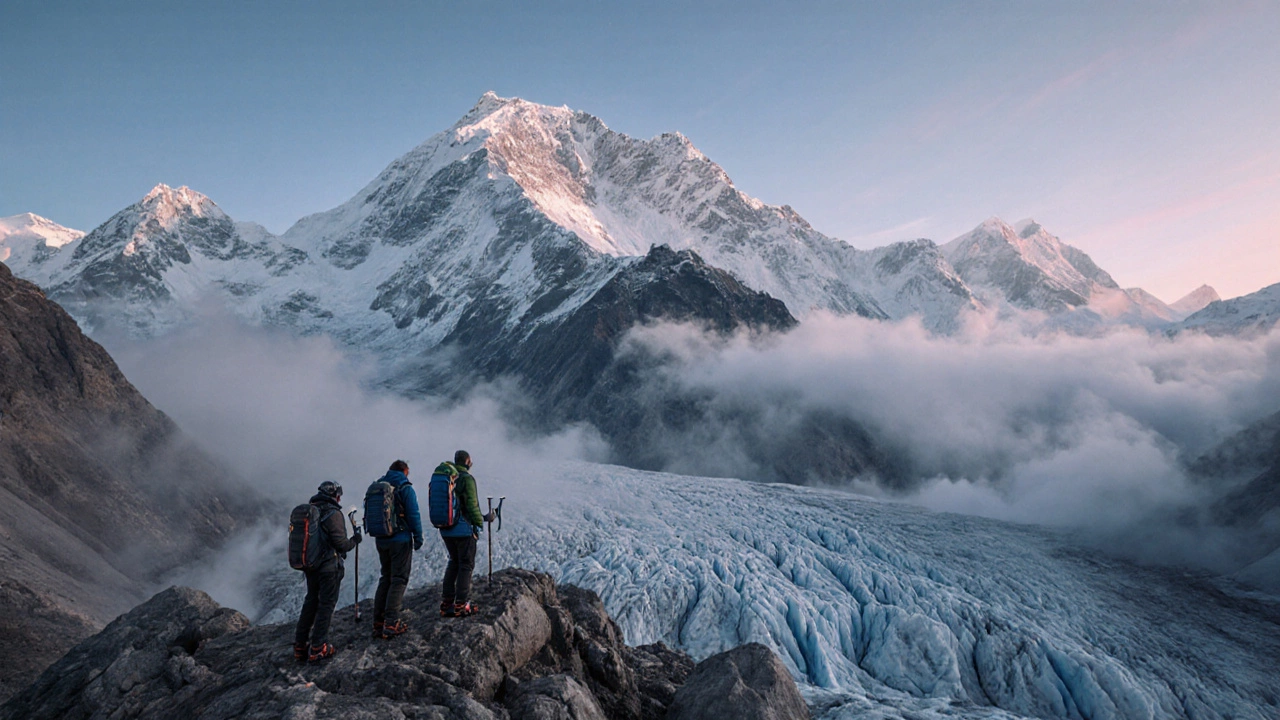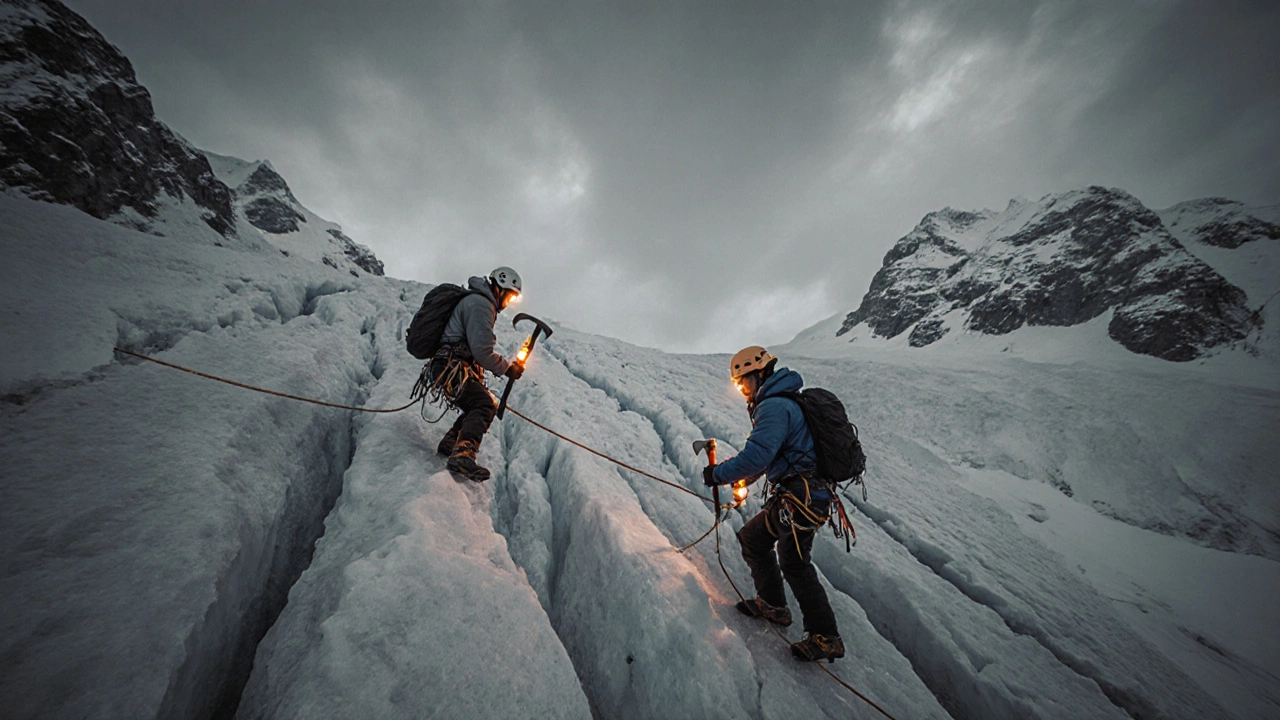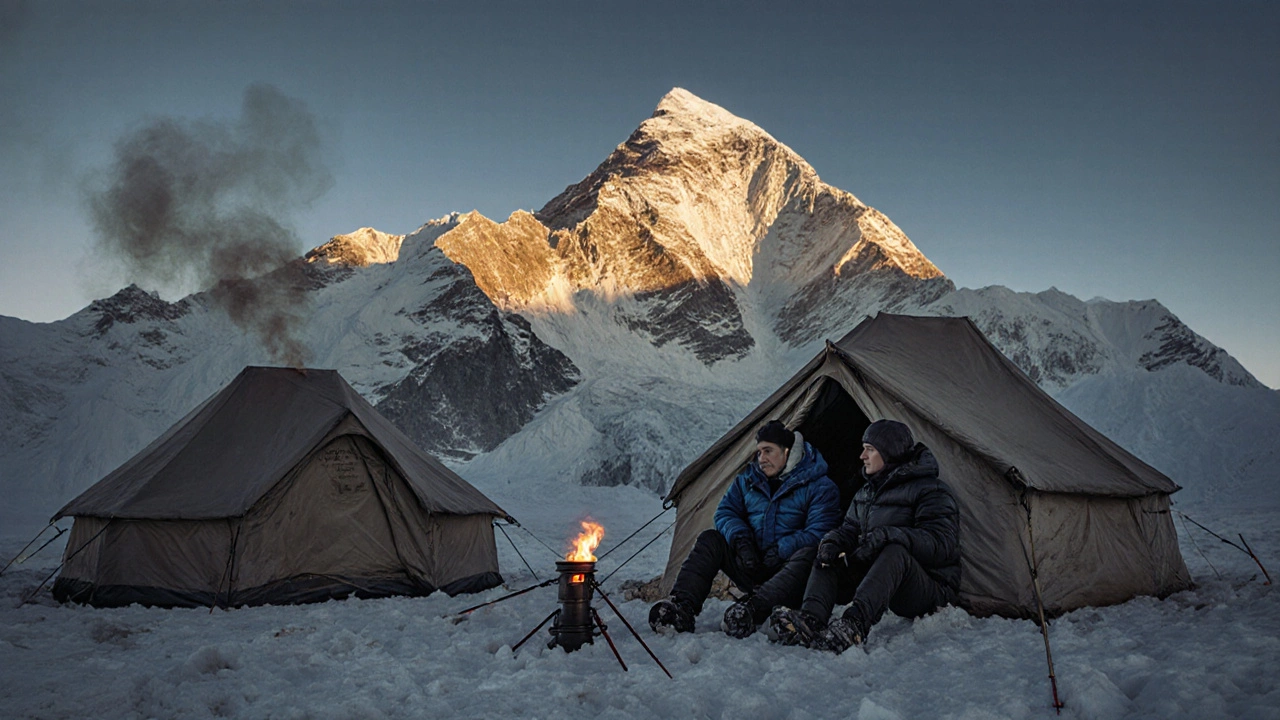K2 Base Camp via Abruzzi Ridge: The Hardest Trek in Asia
 Oct, 24 2025
Oct, 24 2025
K2 Trek Fitness Assessment Tool
Assess Your Fitness for the K2 Base Camp Trek
This tool evaluates your readiness for the K2 Base Camp via Abruzzi Ridge trek based on key fitness factors. The trek requires significant physical conditioning, altitude experience, and mountaineering skills.
You need to be in excellent physical condition to complete this challenging trek safely.
Your fitness assessment will appear here after calculation.
Key Takeaways
- K2 Base Camp via the Abruzzi Ridge tops the list as the toughest trek in Asia.
- Altitude reaches 5,150 m, with technical glacier travel and exposure to severe weather.
- Only the very fit, well‑equipped, and experienced high‑altitude trekkers should attempt it.
- Permits, logistics, and a solid rescue plan are mandatory.
- Comparing it with other brutal Asian treks helps you pick the right challenge for your skill level.
When it comes to extreme high‑altitude walking, K2 Base Camp via the Abruzzi Ridge is widely regarded as the hardest trek in Asia, combining technical climbing sections, glaciated terrain, and one of the world’s highest base camps at 5,150 m.
The journey sits in the Karakoram range on the border of Pakistan and China, demanding not only physical stamina but also solid mountaineering skills. If you’ve ever wondered which Asian trail pushes the limits of endurance, this is the answer.
Why This Trek Holds the Crown
The difficulty stems from three core factors:
- Altitude: You spend most of the route above 4,500 m, where oxygen drops to about 60 % of sea‑level levels. Acute mountain sickness is a real threat.
- Technical Terrain: The Abruzzi Ridge traverses crevassed glaciers, steep ice faces, and mixed rock‑snow sections that often require crampons, ice axes, and rope work.
- Unpredictable Weather: The Karakoram is notorious for sudden storms, high winds, and sub‑zero night temperatures, even in summer.
Combine these with limited rescue infrastructure, and you have a trek that borders on an expedition.
Preparing for the Challenge
Success hinges on thorough preparation. Below is a checklist of what you need to master before setting foot on the trail.
- Fitness: Aim for at least 12 weeks of high‑intensity cardio, leg strength training, and long‑duration hikes above 2,500 m.
- Mountaineering Skills: Take a certified glacier travel course. Practice self‑arrest, rope team movement, and crevasse rescue.
- Acclimatization Plan: Follow a “climb high, sleep low” strategy. Spend a minimum of 4‑5 days at 4,000 m before the final push.
- Gear List:
- Double‑layer insulated down jacket
- Down‑filled sleeping bag rated to -20 °C
- Crampons with front points
- Technical ice axe (40‑50 cm)
- Four‑season mountaineering boots (compatible with crampons)
- Portable oxygen canister (optional but recommended above 5,000 m)
- Permits & Visas: You’ll need a Pakistani trekking permit for Gilgit‑Baltistan, a special K2 Base Camp permit, and a Chinese entry visa if you approach from the north side. Arrange these through a licensed trekking agency.

Logistics and Best Season
The optimal window runs from late June to early September. Snow has melted enough to expose the ridge, yet the monsoon hasn’t arrived. Flights land in Gilgit (Pakistan) or Skardu. From there, a 24‑hour jeep ride gets you to the trailhead at Askole.
Typical itineraries last 20‑25 days, including a buffer for weather delays. It’s common to use a small team of local porters for gear, but you’ll carry your own technical equipment.
How It Stacks Up Against Other Brutal Asian Treks
| Trekk | Max Altitude (m) | Technical Rating (1‑5) | Typical Duration (days) | Permit Difficulty |
|---|---|---|---|---|
| K2 Base Camp via Abruzzi Ridge | 5,150 | 5 | 20‑25 | High (special K2 permit) |
| Everest Base Camp - North Side (Tibet) | 5,150 | 3 | 14‑16 | Medium (Tibetan travel permit) |
| Markha Valley Trek (Ladakh) | 4,750 | 4 | 12‑14 | Low (standard Indian permit) |
| Kanchenjunga Base Camp | 5,050 | 5 | 22‑26 | High (multiple Indian permits) |
| Goecha La Trek (Sikkim) | 4,940 | 4 | 12‑13 | Medium (Sikkim restricted area permit) |
As the table shows, K2 Base Camp scores the highest on technical difficulty and permit complexity, which is why it’s considered the toughest.

Step‑by‑Step Itinerary Snapshot
- Day 1‑2: Fly into Gilgit, acclimatize at 1,500 m.
- Day 3: Jeep to Askole, rest.
- Day 4‑6: Trek to Base Camp of the Baltoro Glacier (4,300 m), set up camp.
- Day 7‑9: Cross the Baltoro Glacier, negotiate crevasses, reach Camp 1 (4,800 m).
- Day 10‑12: Ascend the Abruzzi Ridge to Camp 2 (5,100 m), perform rope fixes where needed.
- Day 13‑14: Reach K2 Base Camp at 5,150 m, spend a night for summit attempts observation.
- Day 15‑18: Retrace steps, allowing extra days for weather delays.
- Day 19‑20: Return to Skardu and fly out.
Every segment includes an altitude gain of 300‑500 m per day, staying within safe acclimatization limits.
Safety Tips & Common Pitfalls
- Monitor Oxygen Levels: Carry a pulse oximeter. Descend immediately if SpO₂ drops below 85 %.
- Weather Watching: Use satellite apps for real‑time forecasts. Never start a summit push when winds exceed 50 km/h.
- Know Your Limits: The line between challenge and danger is thin. Turn back early if you feel severe breathlessness or headaches.
- Emergency Plan: Register your itinerary with local authorities and have a satellite messenger (e.g., Garmin inReach).
- Pack Light, Pack Smart: Over‑packing adds fatigue on steep glacier sections. Prioritize multi‑use gear.
Mini‑FAQ
Is prior mountaineering experience required?
Yes. You should be comfortable with crampon walking, rope team travel, and self‑arrest techniques. A basic ice‑climbing course is strongly recommended.
What is the best time of year to attempt the trek?
Late June through early September gives the most stable weather and reduced snow hazards.
How many days should I budget for the whole trip?
Plan for 20‑25 days, including buffer days for weather delays and acclimatization.
Do I need a guide?
A licensed high‑altitude guide is mandatory for the K2 Base Camp permit and for safety on technical sections.
What are the main hazards on this trek?
Crevasses, avalanches, altitude sickness, and sudden storms are the top risks. Proper gear and a solid rescue plan mitigate them.
If you’re chasing the ultimate test of stamina, skill, and mental grit, the K2 Base Camp via the Abruzzi Ridge delivers it all. It’s not a casual walk in the hills-this is high‑altitude adventure at the edge of human endurance. hardest trek in Asia is more than a headline; it’s a call to prepare meticulously, respect the mountains, and know that turning back is sometimes the bravest move.